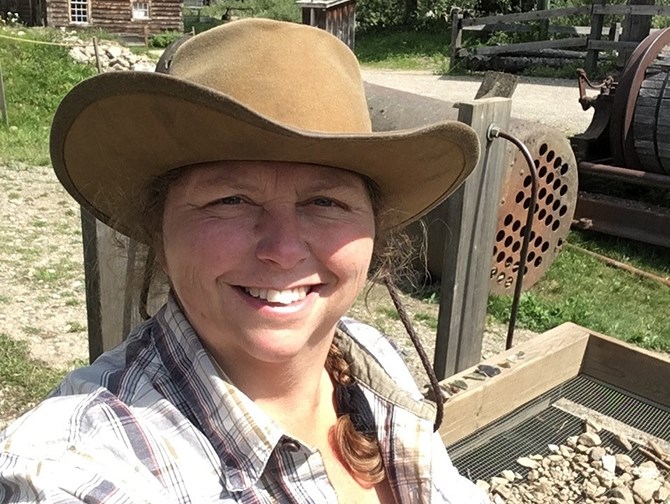
Dawn Ainsley is the on-site archaeologist at Barkerville Historic Town and Park.
Image Credit: SUBMITTED / Dawn Ainsley
June 17, 2020 - 6:30 AM
Dawn Ainsley makes part of her living going through people’s garbage.
But Ainsley is anything but your average dumpster-diver, and the garbage she pokes through isn’t the stuff piled up at the curb for this morning’s garbage pickup.
Ainsley is the on-site archaeologist at British Columbia’s Barkerville Historic Town and Park, east of Quesnel.
She finds it a fascinating experience, and this summer there is an opportunity for tourists to experience a bit of what she does as the historic townsite prepares for a modified tourist season due to COVID-19 protocols.
She’s going through a refuse pile left in the gold rush town more than 150 years ago, learning new things about the Chinese community that was a part of the town during the gold rush years.
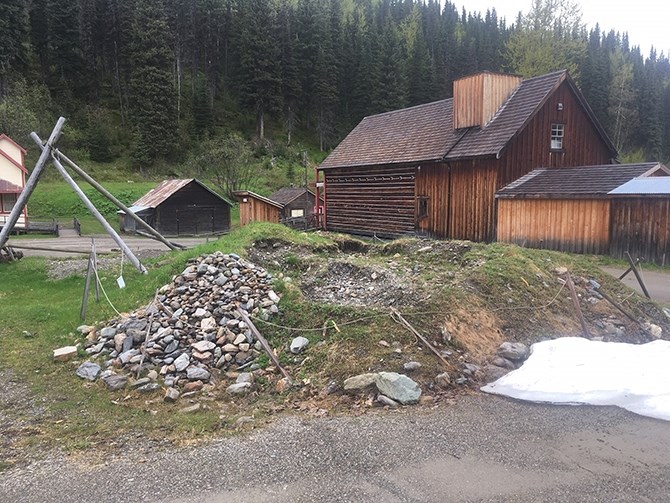
The garbage pit beside a replica of the original restaurant.
Image Credit: SUBMITTED / Dawn Ainsley
The town was undergoing some upgrades recently, installing new water and sewer lines in the historic gold rush town when a pile of garbage dating back to the gold rush days was excavated.
“I was finding a lot of artifacts in that area, so rather than trying to sift through all the material in a short time, we moved it aside for future programming,” Ainsley says.
She’s been sifting through the old garbage pile when she has the time, between other duties she performs in her role.
She says the ancient refuse pile came from two Chinese restaurants that operated during the town’s heyday in the 1860s.
“Most garbage dumps back then were off people’s back or side doors. They developed larger sites later on, but in the early days, they all had these dumps off the back porch,” she says.
The material was buried naturally by spring flooding on an annual basis. It was worse back in the old days because the miners cut all the trees on the neighbouring hillsides down, Ainsley says.
“The garbage got buried by the spring floods. The piles sometimes moved as well,” she says.
The foundation of the original theatre building in Barkerville is now 15 feet below the surface, Ainsley says, because in the old days the building kept being raised to keep up with what the spring freshets dumped in the streets.
Ainsley says school groups come in for an hour class in archaeology and spend some time sifting through the old refuse.
The pile is also part of a public program where people can walk through, see Ainsley at work and talk to her about the artifacts she’s finding.
“It’s always a learning process. There are so many different things that can come up. I almost always find something that is a mystery, or something special," she says.
The Chinese garbage pile has yielded such things as pottery shards, broken glass, metal and Chinese coins.
“Most of the glass is from liquor bottles, which you might expect in a mining community. The Chinese garbage has yielded less of that, more of pottery from dishes, although I did find a complete Philippines beer bottle and Japanese cider bottles. The Chinese were definitely bringing stuff in as well,” Ainsley says.
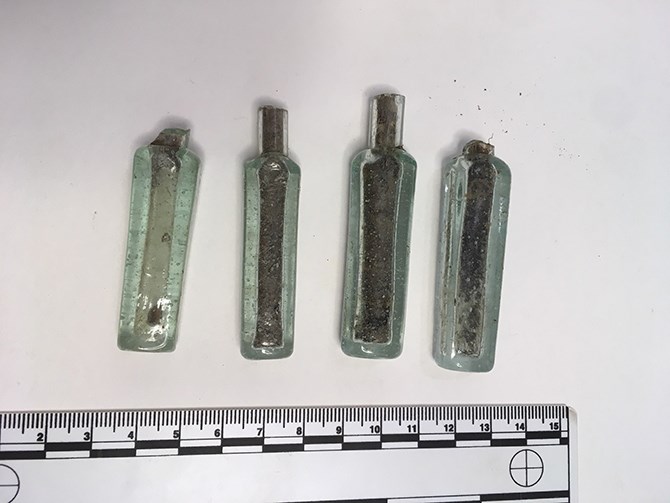
Intact Chinese medicine bottles found at the Barkerville site.
Image Credit: SUBMITTED / Dawn Ainsley
She’s also found butchered pork and beef bones, not many chicken or fish bones – they don’t preserve as well – and opium tins. She has also found pipe fragments, tiny Chinese medicine bottles and gaming pieces including fan-tan beads and dominoes.
“The Chinese medicine bottles are often intact. I just love them. I sometimes wonder how these things get tossed and why, but sometimes things get lost on the floor, and most of the time things just get broken and are tossed,” she says.
“It’s always a learning process, so many different things can turn up, and everyone’s garbage was a little different,” she says.
Ainsley has also discovered several Chinese coins, dating back to the Ching dynasty, from 1644 to the early 1900s.
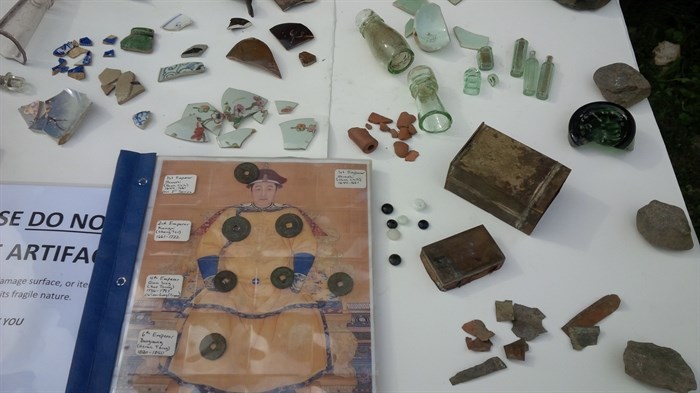
Some of the items uncovered in an early Chinese restaurant garbage pit in Barkerville include Chinese pottery, medicine bottles, fan tan beads, opium tin and fragments , pipe fragments and Chinese coins in binder.
Image Credit: SUBMITTED / Dawn Ainsley
“The Chinese would have held onto them. Their intention was to come here, make money and go home. The money changed with a dynasty change, so the pieces would have been kept for good luck or used as gambling chips. They weren’t used as currency,” Ainsley says.
Plans are in the works for a modified opening of the park this summer under COVID-19 restrictions that will see visitors having to pre-book a time to visit.
“We can only have a maximum of 200 visitors on site. We’re working on how best to ‘flow’ people through the town,” she says.
The historic site is part of B.C.’s Phase 1 re-opening following a shutdown due to the COVID-19 pandemic. Parts of the site are expected to re-open on June 18.
Barkerville is located just over an hour east of Quesnel, 5-1/2 hours from Kamloops and 7-1/2 hours from Penticton.
For more information on Barkerville, see the Barkerville Historic Town and Park website.
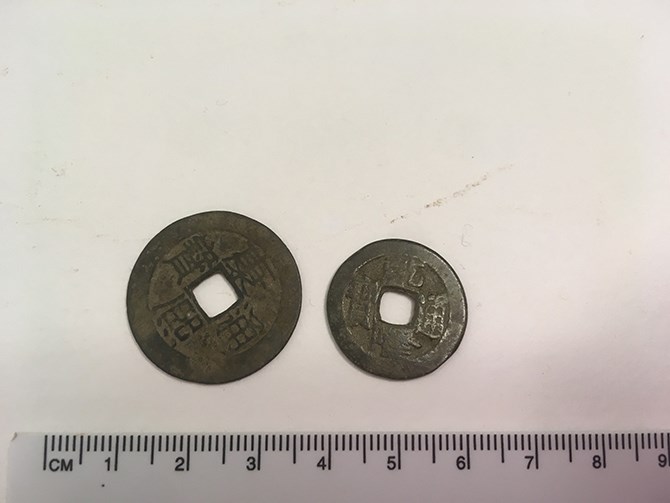
Chinese coins unearthed in Barkerville.
Image Credit: SUBMITTED / Dawn Ainsley
To contact a reporter for this story, email Steve Arstad or call 250-488-3065 or email the editor. You can also submit photos, videos or news tips to tips@infonews.ca and be entered to win a monthly prize draw.
We welcome your comments and opinions on our stories but play nice. We won't censor or delete comments unless they contain off-topic statements or links, unnecessary vulgarity, false facts, spam or obviously fake profiles. If you have any concerns about what you see in comments, email the editor in the link above.
News from © iNFOnews, 2020